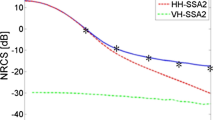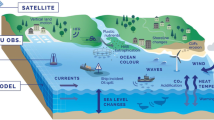
Overview
- Focuses on the issues, peculiarities, and specific challenges of the Asian Seas
- Offers a comprehensive and detailed review of Earth Observations’ potential
- Includes a section devoted to multi-technique assessments of the marine environment
- Is a continuation of the mini-series with earlier volumes on European Seas and African Seas devoted to remote sensing of continental margins
Access this book
Tax calculation will be finalised at checkout
Other ways to access
About this book
Similar content being viewed by others
Keywords
Table of contents (30 chapters)
-
Front Matter
-
Introduction to Remote Sensing of the Asian Seas
-
Front Matter
-
-
Arctic Ocean Marginal Basins
-
Front Matter
-
-
Pacific Ocean Marginal Basins
-
Front Matter
-
Editors and Affiliations
About the editors
Martin Gade (left) received his first degree in Physics in 1992 and then his doctoral degree in Geosciences in 1996, both from the University of Hamburg, Germany. Since 1991 he has been with the Remote Sensing Unit of the Institute of Oceanography, at the University of Hamburg. His research focuses on air-sea interactions and coastal processes, and their remote sensing using active microwave techniques, as well as on laboratory and field experiments with marine surface films.
Bibliographic Information
Book Title: Remote Sensing of the Asian Seas
Editors: Vittorio Barale, Martin Gade
DOI: https://doi.org/10.1007/978-3-319-94067-0
Publisher: Springer Cham
eBook Packages: Earth and Environmental Science, Earth and Environmental Science (R0)
Copyright Information: Springer International Publishing AG, part of Springer Nature 2019
Hardcover ISBN: 978-3-319-94065-6Published: 26 October 2018
Softcover ISBN: 978-3-030-06789-2Published: 31 January 2019
eBook ISBN: 978-3-319-94067-0Published: 07 September 2018
Edition Number: 1
Number of Pages: XXXVII, 565
Number of Illustrations: 71 b/w illustrations, 187 illustrations in colour
Topics: Remote Sensing/Photogrammetry, Oceanography, Freshwater & Marine Ecology, Monitoring/Environmental Analysis



